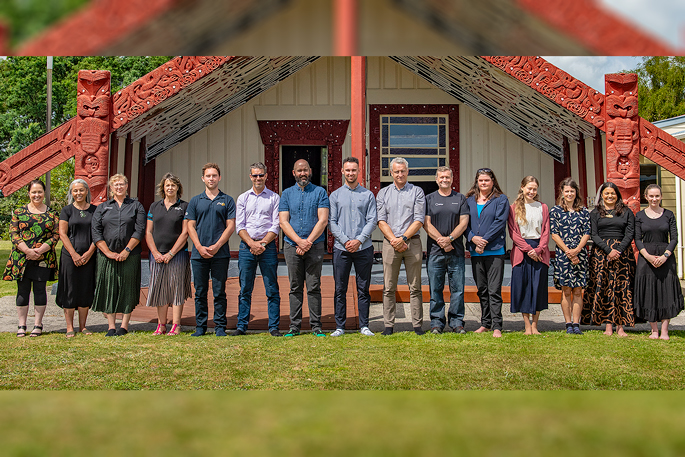Te Wahapū o Waihī and Toi Moana Bay of Plenty Regional Council have partnered in a progressive blue carbon research project of international significance with The Nature Conservancy Aotearoa New Zealand.
The kaupapa/policy aims to explore the carbon sequestration potential of the salt marsh restoration on Cutwater Road, a new wetland that will be developed between the Pongakawa River and Pukehina Canal, on the margins of the Waihī Estuary.
The project officially kicked off in November last year, with fieldwork now underway to measure carbon stocks and fluxes in both the existing salt marsh, and an adjacent pasture earmarked for restoration as a coastal wetland.
TWOW project lead Professor Kura Paul-Burke is excited about the potential impact of the kaupapa.
"Iwi have led the way in highlighting the decades-long deterioration of our estuary. This partnership marks a crucial step towards understanding and harnessing the carbon sequestration potential of our coastal wetlands. By working together, we can make significant steps in environmental conservation and climate change mitigation."
“We are proud to partner with Te Wahapū o Waihī and The Nature Conservancy, and support their work to measure changes in soil carbon stocks,” says Bay of Plenty Regional Council coastal catchments manager Pim De Monchy.
“Not only will this data be shared with us, there are also opportunities for training and/or involvement of our respective taiao teams in data collection. At the same time, we can be actively involved in the further investigation of the potential for Blue Carbon credits for Aotearoa, similar to schemes that already exist in Australia and the UK.”
TNC NZ Nature-based solutions project manager Olya Albot says local collaborations are critical in terms of achieving global environmental goals.
"TNC is committed to leveraging our global expertise to conserve vital ecosystems. Collaborating with local partners is essential in our shared mission to address climate change and protect the natural world.
“We’re excited to be working alongside TWOW and BOPRC as part of a global programme looking to demonstrate how blue carbon projects can help support these critical ecosystems.
“ Restoring coastal wetlands at scale could offer multiple wins for climate, biodiversity and people.”
This kaupapa is part of a larger national initiative looking at carbon sequestration (storage) rates across various coastal wetland types, both natural and restored ecosystems and will feed into international research to establish whether blue carbon credits are viable.
Scientists have shown blue carbon ecosystems can store significantly more carbon than forests - mangrove swamps can store four times more carbon - which is why halting their destruction and restoring and protecting them has become an international priority.
If the rates of sequestration are as high as in other countries, TNC is investigating whether ‘blue carbon’ could be introduced into the ETS, or whether a similar credit scheme could be introduced to raise funds to support the restoration and maintenance of further saltmarsh wetlands or offset the lost revenue from retiring pasture to create wetlands.
Professor Kura Paul-Burke says the collaboration offers a unique opportunity for knowledge exchange, community involvement, and potential advancements in carbon credit systems.
“As the project progresses, we expect to gain a deeper understanding of the ways in which coastal wetlands may be able to mitigate climate change impacts. This iwi-led project seeks to provide benefits for our environment and collective mokopuna of tomorrow.”



0 comments
Leave a Comment
You must be logged in to make a comment.